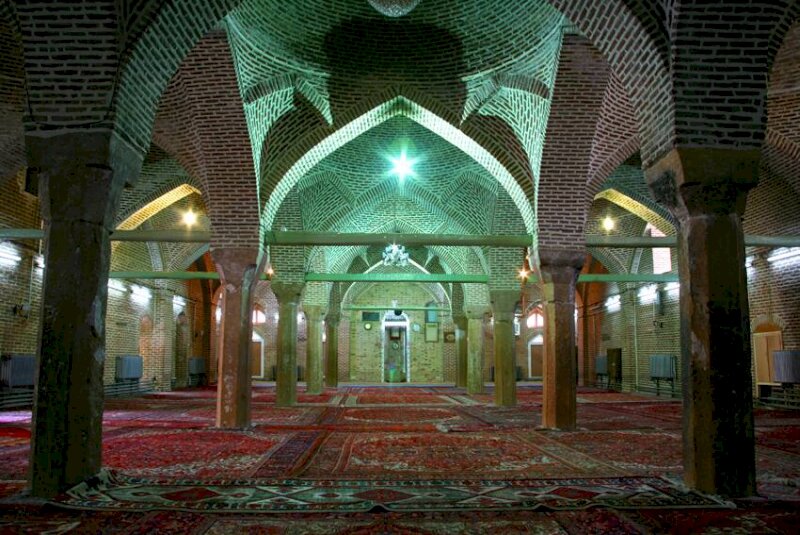Centuries-old mosque in Mahabad being restored to former glory

TEHRAN – A team of cultural heritage experts and restorers has commenced work on the Jameh Mosque of Mahabad, which is one of the most significant places of worship in the northwestern Iranian city.
Located in West Azarbaijan province, the mosque is also a top tourist destination due to its age and unique architectural elements; it has 18 pillars and 18 domes.
Insulating certain parts of the mosque, repairing the façade of minarets and the entrance portal, as well as strengthening the surrounding walls are pillars of the project, the provincial tourism chief has announced.
A budget of 2.3 billion rials ($54,700 at the official exchange rate of 42,000 rials per dollar) has been allocated to the project, CHTN quoted Jalil Jabari as saying on Thursday.
The Safavid-era (1501-1736) mosque was inscribed on the national heritage list in 1969.
The terms “Jameh Mosque” or “Masjed-e Jameh” or “Friday Mosque” are used in Iran for a grand communal mosque where mandatory Friday prayers are/were performed. The phrase is used in other Muslim countries but only in Iran does it designate this purpose.
West Azarbaijan embraces a variety of lush natural sceneries, cultural heritage sites, and museums including the UNESCO sites of Takht-e Soleyman and Qareh Klise (St. Thaddeus Monastery), Teppe Hasanlu, and the ruined Bastam Citadel.
The region has been the seat of several ancient civilizations. It formed part of Urartu and later of Media. In the 4th century BC, it was conquered by Alexander the Great and was named Atropatene after one of Alexander’s generals, Atropates, who established a small kingdom there. The area returned to the Persian (Iranian) rule under the Sasanians in the 3rd century CE. The Arabs controlled Azerbaijan from the 7th century until Turkish nomads overran it in the 11th century. Thenceforth the inhabitants of the region were Turkish speakers. The region was overrun by the Mongols in the 13th century, and, under the ruler Hulegu, Azarbaijan became the center of a Mongol empire extending from Syria on the west to the Oxus River (now Amu Darya) on the east.
ABU/AFM
